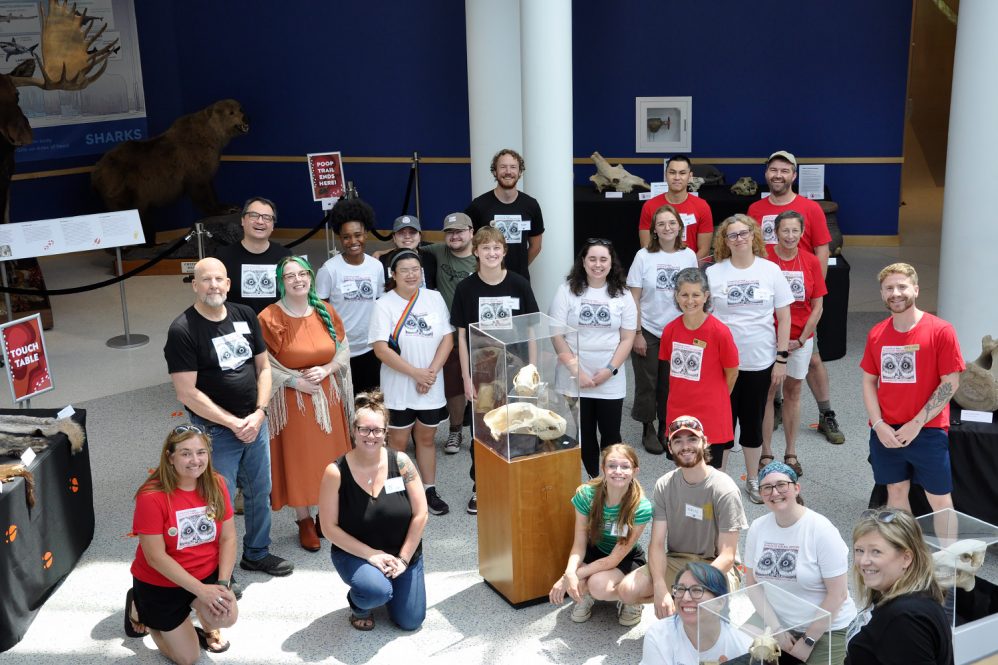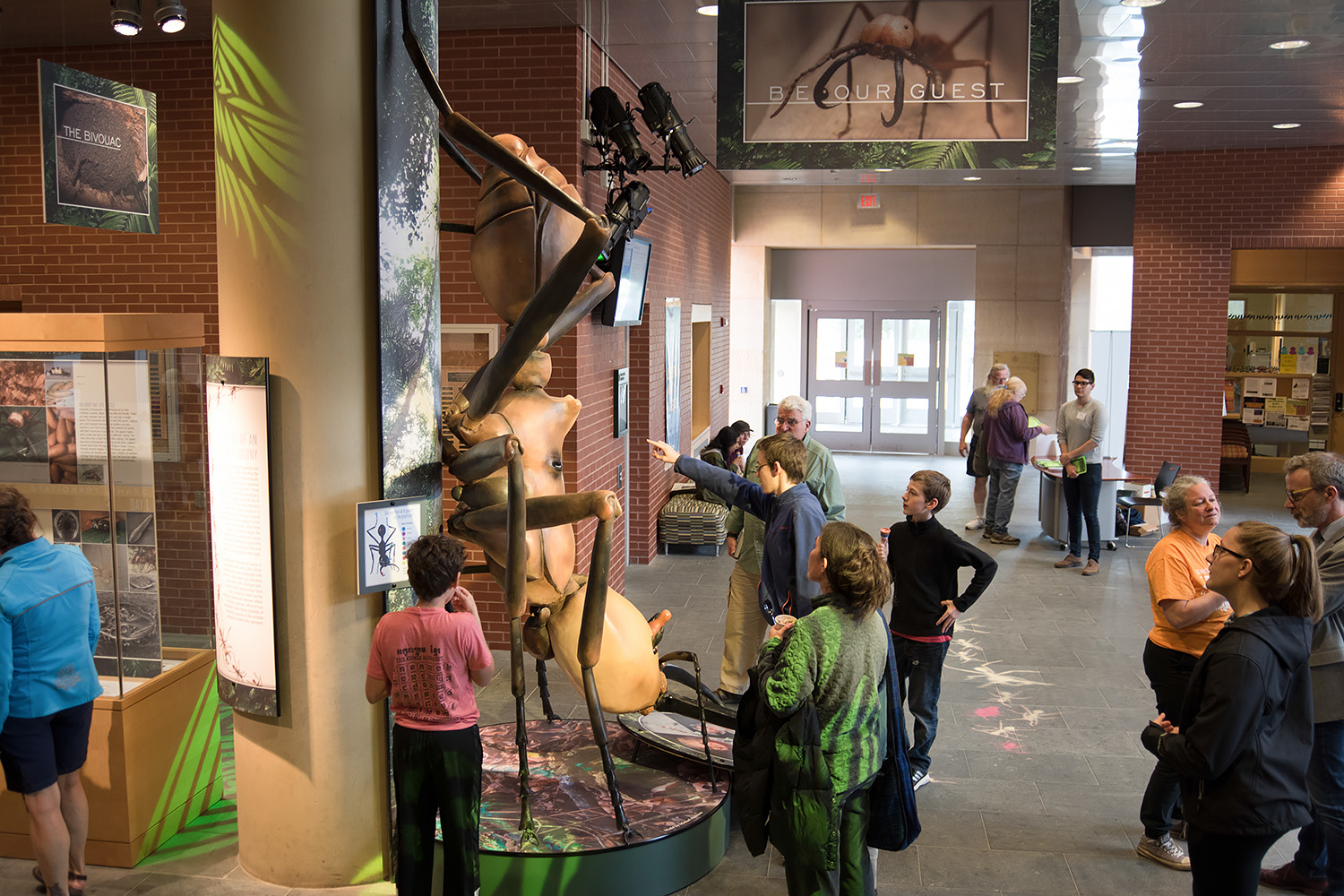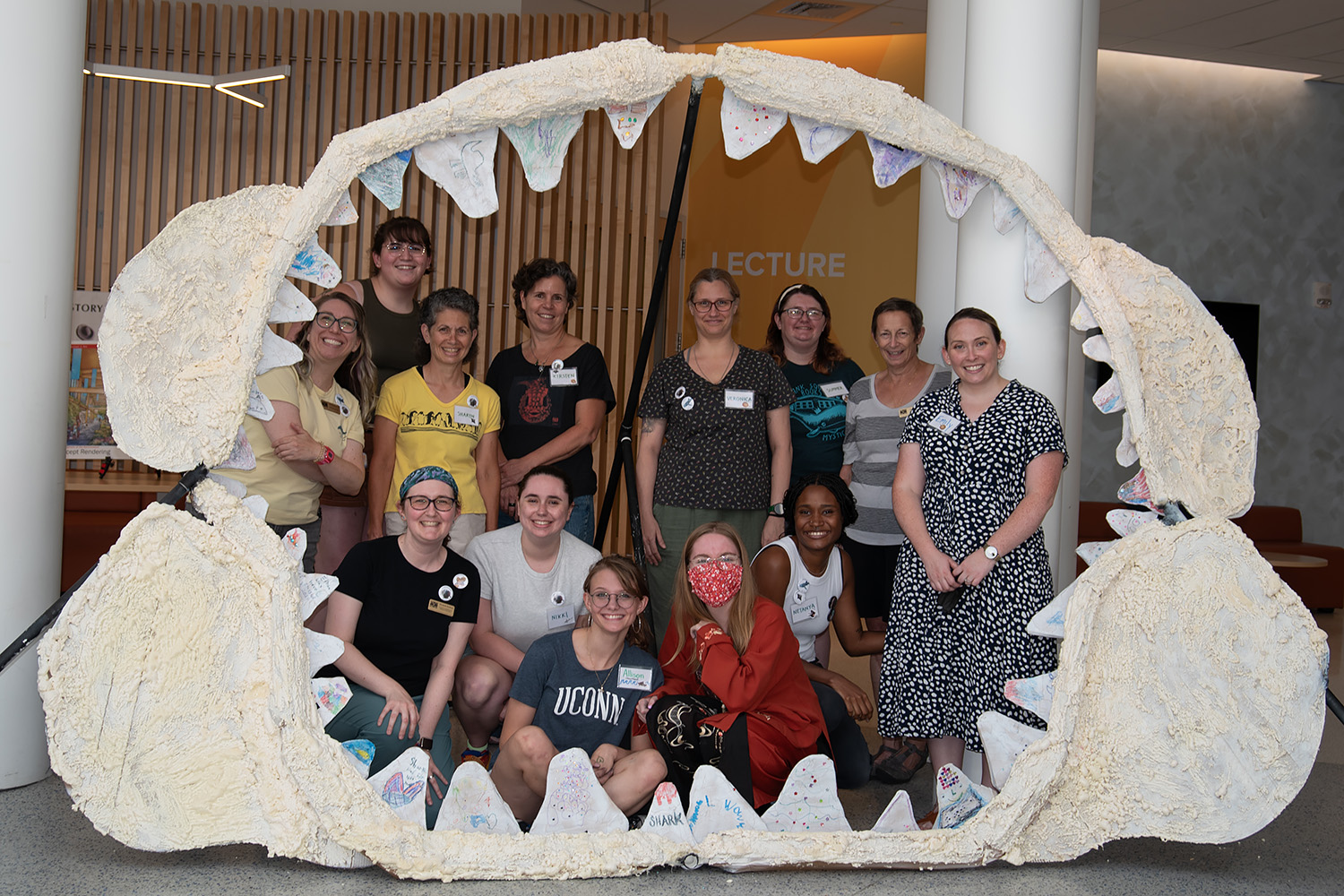In July, the museum returned to its roots in the College of Liberal Arts and Sciences, bringing together two units with a shared commitment to interdisciplinary learning and public engagement

Museum staff and volunteers in the Gant Science Complex Light Court during Mega Mammal Day on July 26, 2025. (Photo courtesy of Andrew Bovasso)
With hands-on exhibits, pop-up displays, and interactive events that draw crowds from across the state, the Connecticut State Museum of Natural History has a knack for making science surprising, memorable, and fun.
But the museum does more than just spark curiosity. It also plays a key role in UConn's public engagement mission, helping faculty and students connect their work to communities far beyond campus.
This year, the museum took an important step to deepen that commitment: It officially returned to the College of Liberal Arts and Sciences (CLAS), where it was first established in 1985, after spending several years under the Institute of the Environment.
By rejoining CLAS, the museum strengthens its ties to the departments and disciplines most connected to its work, from anthropology to biology to earth sciences, while helping the College bring natural history to life for learners of all ages.
"The museum is an outstanding resource for both the University and the state, helping make the ideas and discoveries we study in the humanities, social sciences, and sciences more accessible to people across Connecticut," says Ofer Harel, dean of CLAS. "I'm excited about the opportunities it offers to broaden the impact of our research."
The museum is mandated to serve the residents of Connecticut, a role it fulfills by engaging diverse communities, providing transformative learning experiences, and supporting research and discovery through the development of new resources.
"We're here to reach people across the state of all ages, and we try to connect that outreach to what's available at UConn," says Janine Caira, museum director and Board of Trustees Distinguished Professor Emerita in the Department of Ecology and Evolutionary Biology (EEB).
Each year, the museum organizes dozens of interactive programs, most of which are free and open to the public. It hosts public engagement events and workshops; participates in community events statewide; maintains and catalogs UConn's natural history collections, in collaboration with the Biodiversity Research Collections in EEB; and contributes to major initiatives, including the UConn Arboretum's Campus Tree Walk and the Stone Pavilion preservation project in the Department of Earth Sciences.
Caira says the museum's current priority is optimizing its programming to reach as many people as possible. And reach people they do: the museum's most recent event, Mega Mammal Day in July, drew more than 300 visitors to the Storrs campus. Attendees explored displays of three extinct mammals once native to Connecticut, viewed the taxidermy mount of the state's largest recorded moose, and played a "poop trail" matching game, where participants identified animals by their droppings.
Other recent events have included exhibits with specimens and scientific illustrations; collaborations with the Ballard Institute and Museum of Puppetry, the Department of Digital Media and Design, the Department of English; and archaeology field schools for adults, led by state archaeologist and head of the museum's Office of State Archaeology Sarah Sportman. Many programs include interactive experiences and tactile activities that encourage children and adults to learn through play.
The museum also supports UConn faculty and students in fulfilling the public engagement components of grant-funded research. By offering expertise in exhibit development and science communication, the museum's staff help researchers share their work with broader audiences in creative and lasting ways, Caira says.
"If you want to do something spectacular, you need a professional group with the right set of skills to make your work have a bigger impact," she says. "Our exhibits are evergreen. They can stay up and people can learn from them forever."
The museum's team includes professional staff and a rotating group of undergraduate and graduate student employees, many of them from CLAS departments.
"Our students get experience and help with everything from archival work to designing kids' programs," says Caira. "They bring their own skills and interests, and we find ways to get them involved."
While the museum does not currently have a permanent location - though that is a central goal of its current fundraising efforts - it maintains a strong presence at UConn and throughout the state. Its staff regularly install pop-up exhibits in buildings at the Storrs campus, travel to schools and community events, and build visibility through statewide partnerships.
Caira, who has led the museum since 2015, sees its return to CLAS as a meaningful next chapter.
"CLAS is a good match for us because of its connection to natural history, and our potential to help CLAS engage with other units across campus to advance the University's public engagement overall," she says. "We're all about outreach. Given the budget situation, when people can't do that as much, we can, because that's our mandate."
Caira's connection to the museum spans decades, and her belief in its mission runs deep. She completed her Ph.D. while working at the University of Nebraska State Museum, and she was first introduced to the Connecticut museum by former EEB professor Carl Rettenmeyer, its founding director.
"I've always been a museum person, and I think it's so important for Connecticut to have something like this here," she says. "I want people to not just think about natural history, but to engage with it - to feel it and experience it."















